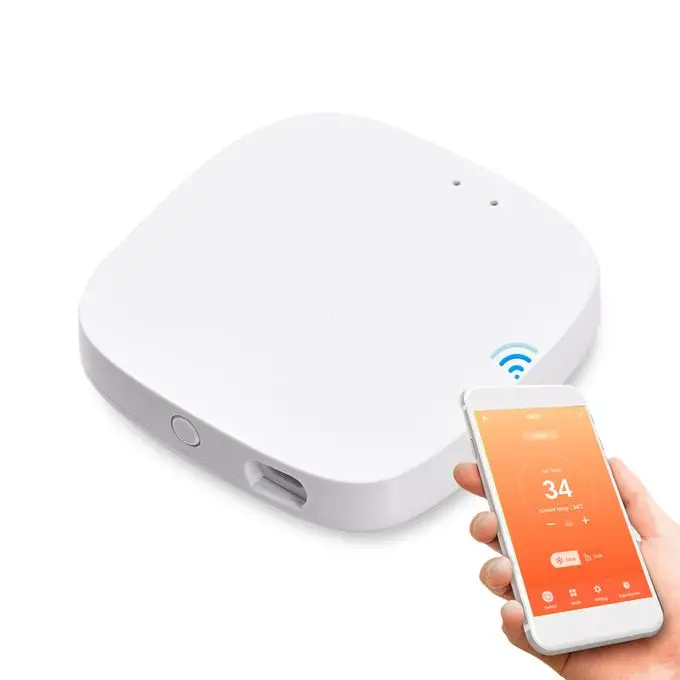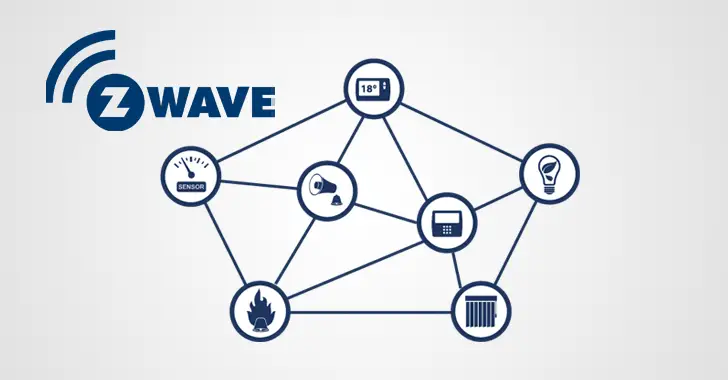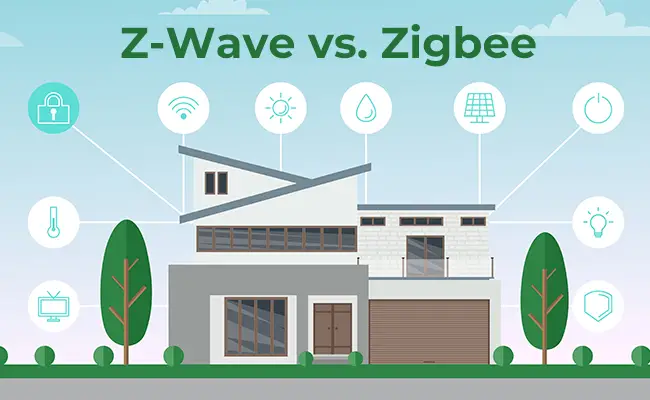Introduction
Welcome to the future where your lights respond to your mood, thermostats know your preferences, and security systems act like personal bodyguards. That’s the magic of smart home automation, and two quiet champions making it all work behind the scenes are Zigbee and Z-Wave.
These wireless protocols are like the glue that holds your smart home together, letting devices communicate seamlessly. But if you’re scratching your head wondering what the heck Zigbee and Z-Wave even are, don’t worry you’re not alone. Let’s break it all down, in a way that actually makes sense.
Clicks and Scrolls: The Digital Revolution Transforming History Class
What Is Smart Home Automation Anyway?
Before we geek out on Zigbee and Z-Wave, let’s get clear on the big picture. Smart home automation refers to the use of technology to control and automate household systems lighting, heating, security, entertainment, and more with minimal human intervention.
Think of it like your house having a brain. You can control it from your phone, set schedules, or even use voice commands via Alexa, Google Assistant, or Siri.
Why Zigbee and Z-Wave Matter in Smart Homes
At the heart of smart home magic lies communication. Your smart devices need a common language to talk to each other. That’s where Zigbee and Z-Wave come in. They’re both wireless communication protocols designed specifically for smart devices.
They’re like two different dialects of the same language both doing the same job but in their own way.
Zigbee Explained: Lightweight, Fast, and Scalable

Zigbee is a low-power, low-data-rate wireless protocol based on the IEEE 802.15.4 standard. It operates mostly on the 2.4 GHz frequency, the same as Wi-Fi, which gives it global compatibility.
Zigbee’s Superpower: Scalability
Zigbee can handle up to 65,000 devices in a single network. That’s a ridiculous number even if you have a smart toaster, toothbrush, and toilet.
It’s Also Fast and Responsive
Zigbee boasts low latency, meaning your commands (like turning off the lights) happen instantly. No frustrating delays.
But There’s a Catch
Because it shares the 2.4 GHz frequency with Wi-Fi and Bluetooth, interference can be a real issue in crowded homes.
Z-Wave Unpacked: Stable, Reliable, and Secure

Z-Wave, unlike Zigbee, operates at sub-GHz frequencies—908.42 MHz in the US, for example. That makes it much less prone to interference and more reliable in environments packed with devices.
Z-Wave’s Superpower: Interference-Free Operation
Because it’s not sharing space with Wi-Fi and Bluetooth, Z-Wave tends to work like a charm in any setting, even with dozens of connected devices.
Range and Efficiency
Z-Wave devices typically have a range of 100 meters line-of-sight, and they form a mesh network, meaning each device acts as a repeater to extend the network’s reach.
Slight Limitation: Device Cap
Z-Wave can support up to 232 devices per network. That’s still more than enough for most homes, but it doesn’t match Zigbee’s wild scalability.
Mesh Networking: The Secret Sauce
Both Zigbee and Z-Wave use mesh networks, where each device connects to others around it, not just the central hub. This makes the system more robust. If one device fails, the signal finds another path.
Think of it like a social circle if one friend doesn’t answer your call, you can still reach others through mutual friends.
Zigbee vs. Z-Wave: A Side-by-Side Showdown
| Feature | Zigbee | Z-Wave |
|---|---|---|
| Frequency | 2.4 GHz | Sub-GHz (908.42 MHz in US) |
| Device Limit | ~65,000 | 232 |
| Range | ~10–20 meters | ~30–100 meters |
| Interference | Prone (due to Wi-Fi/Bluetooth) | Minimal |
| Power Use | Low | Very Low |
| Speed | Faster | Slower but more stable |
| Global Compatibility | Excellent | Region-specific |
Compatibility: Can Zigbee and Z-Wave Work Together?
Technically? No. They speak different “languages,” so Zigbee devices can’t talk directly to Z-Wave devices. But here’s the good news: many smart home hubs (like Samsung SmartThings, Hubitat, or Aeotec) support both protocols.
These hubs act as interpreters, allowing both Zigbee and Z-Wave devices to live in harmony under one roof.
Popular Devices That Use Zigbee
- Philips Hue smart lighting
- Amazon Echo (with Zigbee hub)
- Samsung SmartThings sensors
- IKEA TRÅDFRI smart bulbs
Zigbee is especially common in smart lighting and energy management.
IoT-Based Monitoring of Soil pH Levels for Crop Optimization
Popular Devices That Use Z-Wave
- Ring Alarm systems
- Aeotec smart switches
- Yale and Schlage smart locks
- Fibaro motion and flood sensors
Z-Wave is a go-to for security, smart locks, and sensors.
Security: Which Is Safer?
Both Zigbee and Z-Wave use AES-128 encryption, the same standard used by banks and governments. That said, Z-Wave has stricter certification processes, making it slightly more secure out of the box.
Still, no system is hacker-proof. Keep your firmware updated and use strong passwords.
Power Consumption: Who’s the Efficiency King?
Z-Wave edges ahead slightly in power efficiency. That means battery-powered devices like motion sensors or door locks tend to last longer with Z-Wave.
If you’re tired of changing batteries every few months, Z-Wave might be your buddy.
Setting Up a Zigbee or Z-Wave Network
It’s easier than you think.
- Get a compatible hub (SmartThings, Hubitat, Home Assistant, etc.)
- Add your devices using the app
- Create automations or scenes (e.g., turn on porch light at sunset)
Boom you’re running a smart home.
The Role of Smart Home Hubs
Unless you’re using Wi-Fi-only devices (which aren’t always reliable), you’ll need a hub to manage Zigbee and Z-Wave gadgets.
Recommended Hubs:
- SmartThings
- Home Assistant (Zigbee/Z-Wave stick required)
- Hubitat Elevation
- Aeotec Smart Home Hub
These hubs allow cross-protocol communication, automation creation, and app integration with Alexa or Google Assistant.
Future Trends: Matter Protocol and Unified Smart Homes
There’s a new kid on the block Matter an open-source standard backed by Apple, Google, and Amazon. It aims to unify smart devices, regardless of brand or protocol.
Both Zigbee and Z-Wave are working toward compatibility with Matter. So your future smart home could become even more seamless.
Which One Should You Choose?
Here’s the TL;DR:
- Choose Zigbee if you want global compatibility, fast response, and you’re okay dealing with occasional Wi-Fi interference.
- Choose Z-Wave if you want ultra-stable connections, long battery life, and you don’t plan on connecting 60,000 devices.
Or… just mix both! A good hub can handle that easily.
Conclusion: Embrace the Automation Revolution
Zigbee and Z-Wave may not be flashy, but they’re the silent heroes of home automation. They create the invisible web of connectivity that makes smart homes truly smart.
So whether you’re automating a single room or turning your whole house into a Jetsons-style wonderland, Zigbee and Z-Wave have your back.
FAQs About Zigbee and Z-Wave
1. Can I use Zigbee and Z-Wave together in one smart home?
Yes, but you’ll need a smart hub that supports both protocols, like SmartThings or Hubitat.
2. Do Zigbee or Z-Wave work without the internet?
Yes! They work locally through mesh networks. However, some features (like app control) may require internet access.
3. Is Zigbee or Z-Wave better for smart locks?
Z-Wave is generally preferred for smart locks because of its stable, interference-free connection and longer battery life.
4. Are Zigbee and Z-Wave secure from hackers?
They use bank-grade AES-128 encryption, making them very secure. Just be sure to keep your devices updated.
5. Will Zigbee and Z-Wave become obsolete with Matter?
Not at all. Both are working toward compatibility with Matter, meaning they’ll likely become even more versatile.
